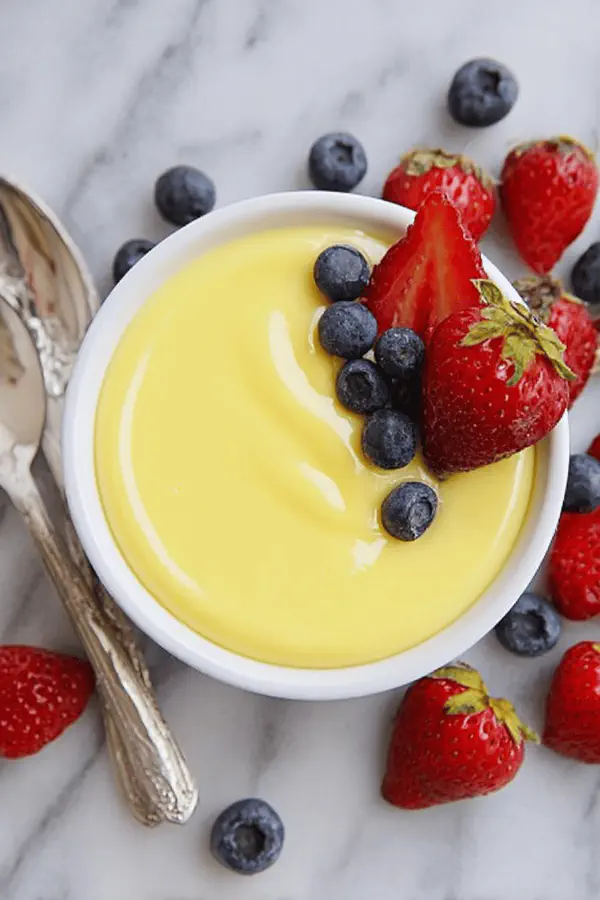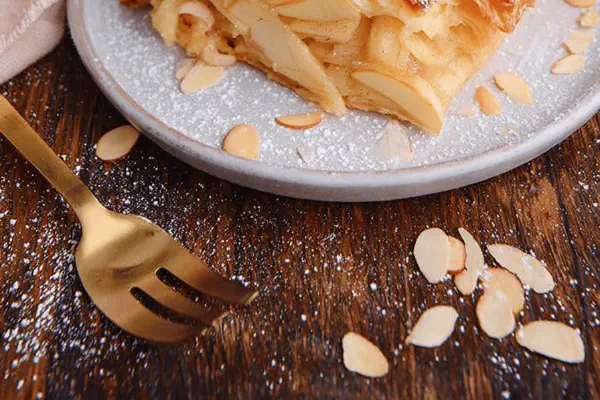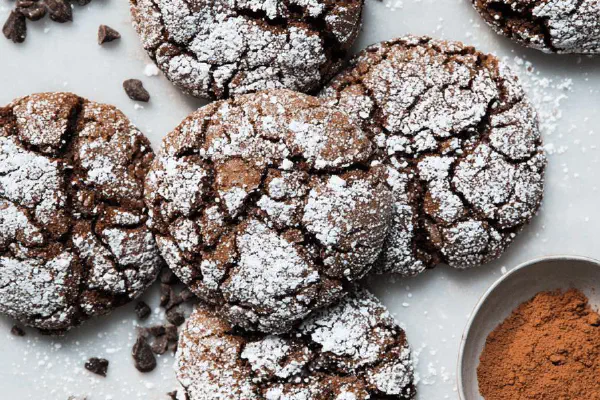Featured Recipe
Rich Vanilla Custard Twist

By Kate
"
Velvety custard using 1.5 cups cream and 1 cup whole milk with oat milk option. Swap cornstarch for arrowroot powder to avoid gumminess. Uses 3 large egg yolks plus 1 whole egg for body and stability. Cook slowly until the custard thickens, watching for subtle bubbles and coats the back of a spoon. Infused with 1 tablespoon bourbon for depth, finished with cold butter. Chill covered directly on surface to prevent skin, sets in 4-6 hours or cooler overnight. Notes on texture, avoiding curdling, and custard skin included.
"
Prep:
5 min
Cook:
25 min
Total:
30 min
Serves:
6 servings
custard
vanilla
dessert
baking
egg recipes
Introduction
Custard every chef must master. Basic ingredients, but precision defines success. Heat low, slow. Milk slowly warming, gentle bubble whispers a cue. Whisking eggs and starch until pale, no lumps—work textured mixtures enough to prevent uneven cooking. Arrowroot powder over cornstarch cuts that nasty ‘gummy’ feel common in rushed versions. Eggs here are yolks mostly with a whole egg tossed in for structure and richness. Butter or bourbon finishes add fat or flavor punch. Patience in chilling solidifies custard’s creamy body. Skipped steps = curdling, skin, grainy nightmare. Practice sense triggers — smell, look, touch. Nothing replaces those. In 30 minutes, get smooth custard that holds up in multiple uses.
Ingredients
About the ingredients
Substitutions considered for texture and flavor balance. Heavy cream softened with whole milk to avoid overly stiff custard; oat milk works for dairy-free, watch thickening time carefully, might be longer. Arrowroot powder replaces cornstarch — less gelatinous, more flexible set. Sugar quantity kept moderate for sweetness without swamp. Vanilla bean paste preferred to extract for visual specks and richer aroma; extract usable but less striking. Using a whole egg with yolks adds body and helps prevent over-thickening but use only fresh eggs to cut risks of egginess or off flavors. Butter is a key fat addition; bourbon optional for warming notes but adds alcohol that cooks off with heat, leaving complexity. Always salt custard — enhances flavor depth and controls sweetness perception. Salt is subtle but necessary.
Method
Technique Tips
Heat milk and cream gradually, no rushing or skipping simmer cues. Patience prevents curdling and scorching. Cup edges bubbles tell you when heat is right—too hot means scrambled eggs, too cold means no thickening. Whisk dry ingredients first, not after combined with eggs, to avoid clumps. Tempering eggs slowly is crucial. Pour cold or very hot milk fast? Poached eggs situation slowly messes texture. Constant stirring at medium-low heat develops expected thickness, clues are sound and visual thickness. Don’t wait for obvious boil — edge bubbles suffice. Remove immediately when coat back of spoon to avoid over-thick, rubbery custard. Butter or bourbon added post heat retains aroma and smoothness. Pressing plastic wrap reduces annoying custard skin; patience during chilling controls texture. Custard firms better overnight; rapid chilling in ramekins helps speed but less ideal for texture. Whisk or fold before serving to refresh texture if thickened too much. Clean utensils essential for no grit or lumps.
Chef's Notes
- 💡 Watch the heat — low and slow. Edge bubbles tell you it's time. Overcooking? Scrambled eggs. Always whisk first before adding eggs. Whisk until no clumps.
- 💡 Add cream and milk gently, don't rush. Slowly pour it in while whisking. Too fast? Scrambled eggs. Ensure mixture is combined but avoid excess foam.
- 💡 Rinse bowls before using. Any leftover crumbs can mess with texture. Clean utensils essential for keeping custard lump-free. Smooth texture means less fuss later.
- 💡 Cooling method matters. Press plastic wrap onto custard. Gaps mean skin. If skin forms? Strain it out later. Avoid gaps during chilling.
- 💡 For flavor swaps — bourbon optional but adds depth. No bourbon? Vanilla extract still works. Butter? Key for richness, can skip but texture suffers.
Kitchen Wisdom
What if custard is too thin?
Cook longer, low heat. Stir constantly. Once thickens, pulls from sides of pot.
How to store leftover custard?
Refrigerate in airtight container. Can last few days. Revisit texture, whisk again.
How to troubleshoot curdling?
Cool pot in ice bath, whisk vigorously. Slow down heat next time, patience is key.
Can I use dairy alternatives?
Yes, oat milk works. But thickening could take longer. Adjust timing based on consistency.



